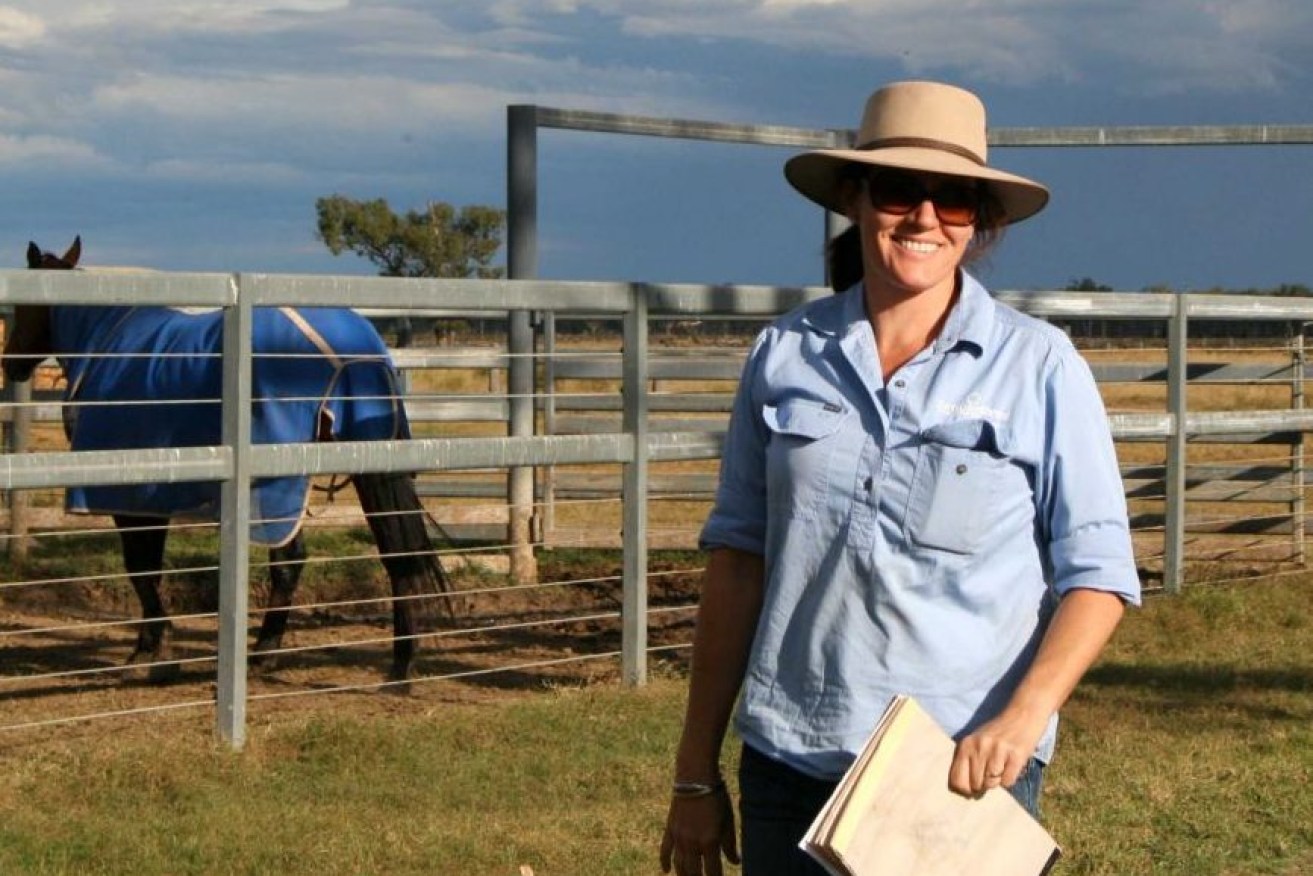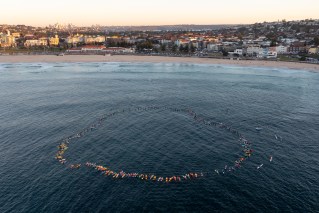How border closures made Kelly’s five-minute drive to work 16 times longer
The closure of the Queensland-NSW border has split farms in two and added hours to commutes and shopping trips. But residents hope a trial in one community will lead to the opening of more crossings along the state line.

Life on the state border has become more complicated for people like Kelly Ostwald. Supplied: Kelly Ostwald
When Kelly Ostwald drives from her home in Queensland down the road to the farm workshed, it’s an interstate trip.
Ostwald’s Beebo property straddles the New South Wales border, and that trip to the shed is just a 5km drive.
But after the state border closed a month ago, that short journey suddenly became an 80km drive via a police-patrolled crossing at Texas, further east.
“Instead of having to travel a kilometre to work … that’s how our workers get across each day now,” Ostwald said.
The border closure — implemented to prevent the spread of coronavirus — has created challenges for locals either side of the state line.
In small border towns and farming communities, many residents now face extra hours of travel to get to the shops, go to work or make medical appointments.
For the Ostwalds, who farm cattle and grain, the closure also dramatically increased the distance — and cost — of freighting their grain and fodder to the local feedlot.
Ostwald supports measures to contain coronavirus but had hoped farmers with split properties would be allowed to drive across local crossings.
Her hopes were shot, however, when she tried to deliver her husband’s lunch while he was on the tractor on the NSW side of the farm.
“When I saw what the barricades looked like, I realised that there was no way we were going to be able to access either side of the property,” she said — although she did manage to walk around the concrete blocks to hand over the lunch.
Twelve hours to move between farms
The border closure means farmer Simon Walker is now facing the prospect of a 12-hour road trip in his planting machinery to get between farms
With a top speed of about 20km per hour, the planter is “no racing car”, he said.
He and wife Rachel Walker are grain growers at Boomi, in NSW, but they also farm and work in Queensland.
“Everything’s based on this [the NSW] side of the border,” he said, so having their local border crossing closed “makes it difficult to duck back to get parts”.
Ms Walker is a school teacher at Talwood in Queensland — usually a 25-minute drive up the road, but now a two-hour journey.
“So it’s a four-hour round trip for a six-hour teaching day,” she said, which isn’t workable given she is supervising four children at home doing online learning.
But she has found ways around the concrete barrier.
“I met up with another staff member at the bridge and handed over my booklets across the bridge to her so she could take them in and hand them out to students,” she said.
Goondiwindi to trial gate solution
Goondiwindi sits on the Queensland side of the Macintyre River.
While it is home to 6000 residents, it services 16,000 people across both states.
Mayor Lawrence Springborg said it was difficult for people outside of cross-border communities to understand how connected and inter-reliant they were.
He said the closure of four access points along a 500km stretch of the border had made it more difficult for people on both sides to run their businesses, shop, collect mail and access medical and essential services.
“It’s critically important that we have mechanisms that enable us to be able to continue to work and operate in the current environment,” said Cr Springborg, whose own office is just 120m from the border.
Goondiwindi Regional Council has been working with Queensland Police on a solution.
This week, the council has been replacing the concrete blocks on border roads with electronically locked gates.
Authorised locals will be given personalised access codes to open the gates using a phone app and Bluetooth technology.
Who uses the gates, and when, will be tracked, Springborg said.
“We won’t compromise health and safety,” he said.
“There will be a requirement to demonstrate special need.”
Springborg hopes the system will be up within days — much to the relief of both the Ostwalds and the Walkers.
If the system works, it could be expanded to other border communities, he said.
Southern Downs Regional Mayor Vic Pennisi said he would watch with interest.
So too will the region’s state LNP MP, James Lister, who has been calling on Queensland’s Labor Government to open more border crossings.
“I continue to receive angry complaints from people about how they have to travel up to 200km in a round trip to access a manned border crossing to go to work, to buy groceries, go to the doctor, or access the other half of their farm,” Mr Lister said.
He has also raised concerns about barriers cutting off routes for emergency services.
“The extra time it would take for them to reach a car accident, fire or heart attack puts lives at risk.”
Permit needed to go to the shops
On the other side of the border in NSW, residents in neighbouring Indigenous communities are also facing challenges because of the tightening of state lines.
The towns of Boggabilla and Toomelah straddle the border, but the restrictions mean locals now need a permit to buy food or see a doctor.
Neither town has a supermarket or pharmacy and residents have always travelled 20km to Goondiwindi for their essentials.
Tiffany McIntosh, who lives in Boggabilla and helps care for several younger siblings, said she could not isolate at home because she needed to keep food on the table.
The 24-year-old has been able to get a border permit and has been getting groceries, mail and medicine for her family and other vulnerable community members.
“If we weren’t allowed to cross the border, we’d need to travel an extra hour away for food,” she said.
“We don’t have the money and petrol to travel that far all the time.”
It has been a challenge for some residents to get a border permit, though. Some live in crowded homes in the community with no fixed address, and others have limited access to the internet.
Battle to keep virus out of communities
Some Toomelah residents told the ABC they were frustrated that they had no ability to isolate in their community because of the lack of essential services.
But McIntosh’s biggest concern was the lack of health care in the community during a global pandemic.
The border closures have resulted in a winding back of GP services in the local health clinics, with just telehealth and basic nursing services available at certain times of the day.
“Now we need to travel to go to the hospital in Goondiwindi,” she said.
“No-one has gotten sick yet but it’s a worry with this coronavirus.”
Older Indigenous Australians have been identified as some of the most vulnerable to the virus because of the high rate of existing health problems.
Despite the complications border closures were causing, it was important residents adhered to them, Toomelah Aboriginal Land Council chairman Malcolm Peckham said.
“We need to protect the elders, stop them from travelling and possibly picking anything up — they are the most at risk,” he said.
“We do not want coronavirus here … because there’s no way to self-isolate once it’s here.
“Most of our elders are living in overcrowded housing … so, you know, there’s grandkids, kids and at least eight people in the house.”
– ABC / rural and regional correspondent Dominique Schwartz and Indigenous affairs correspondent Isabella Higgins












